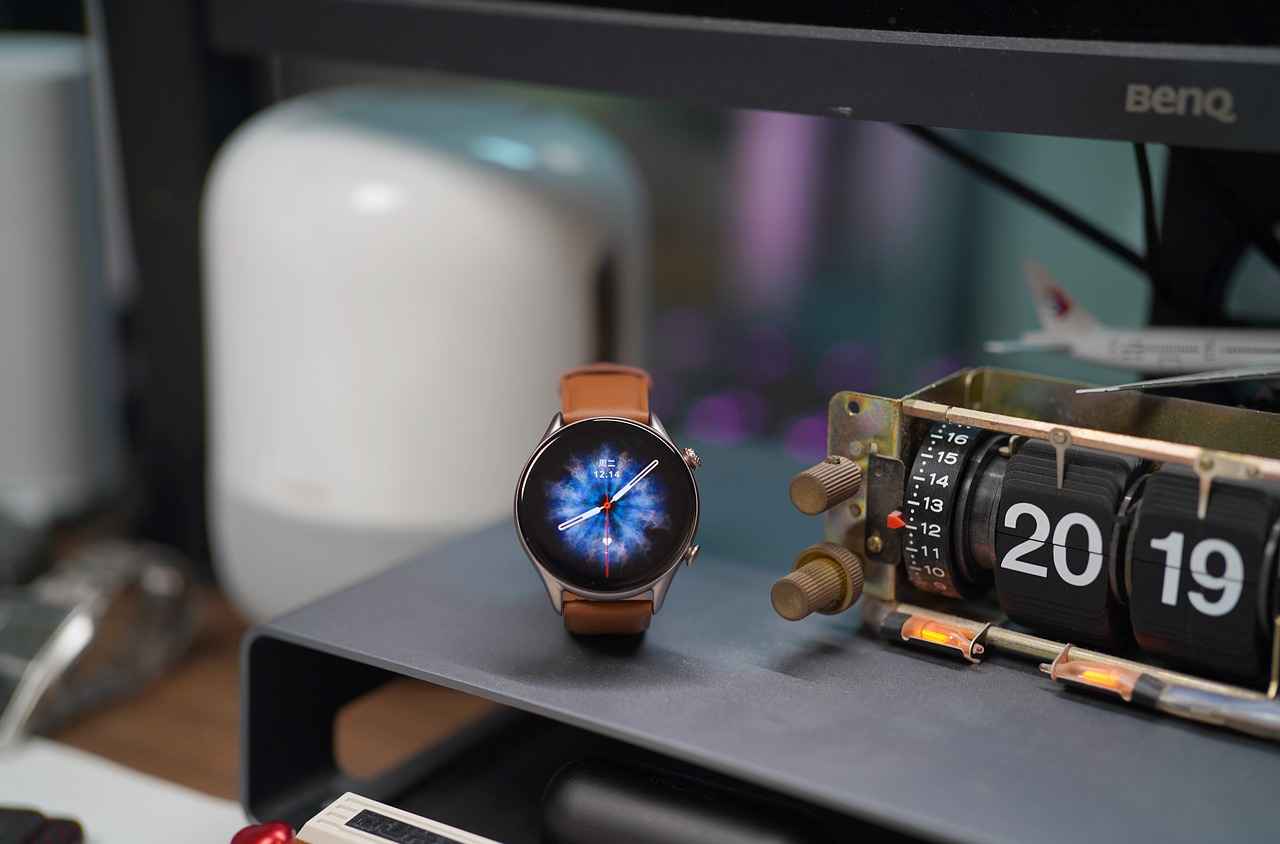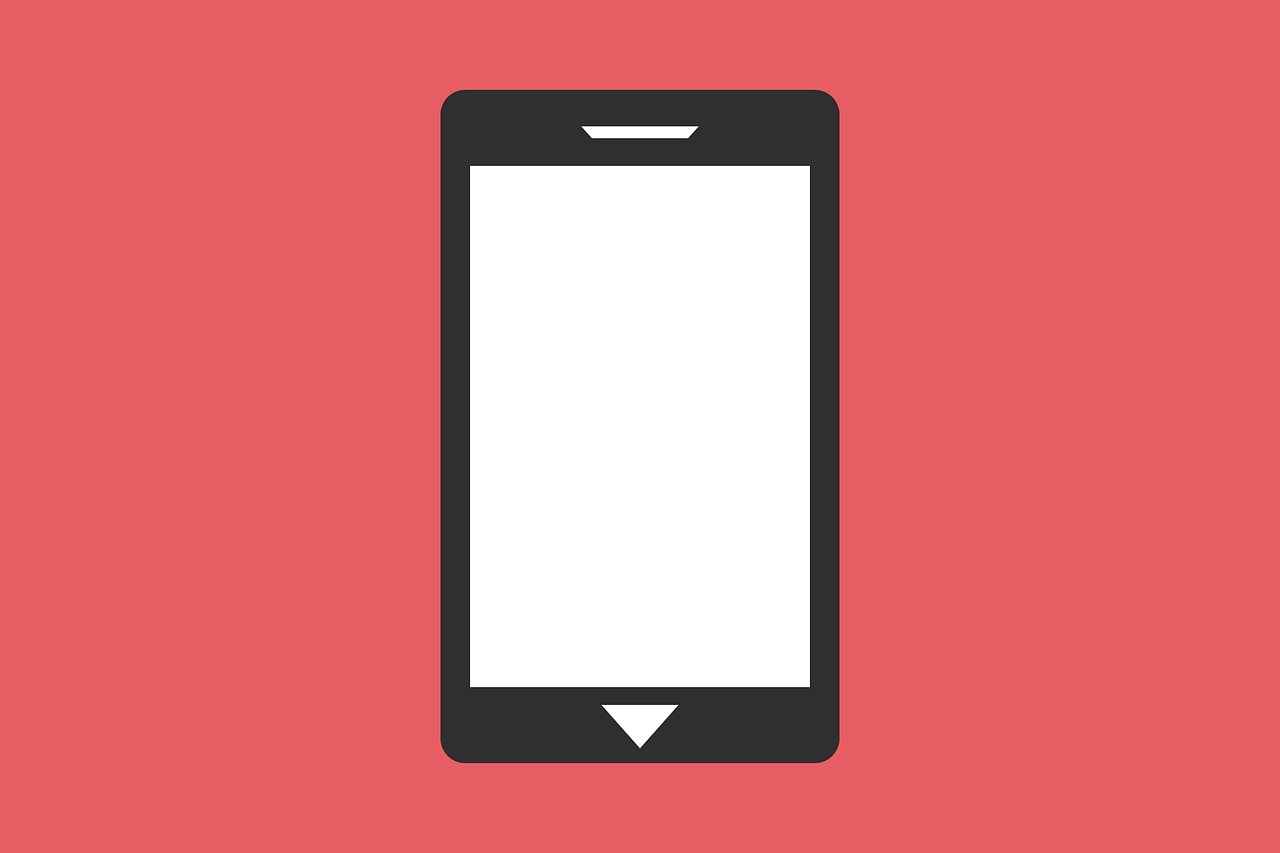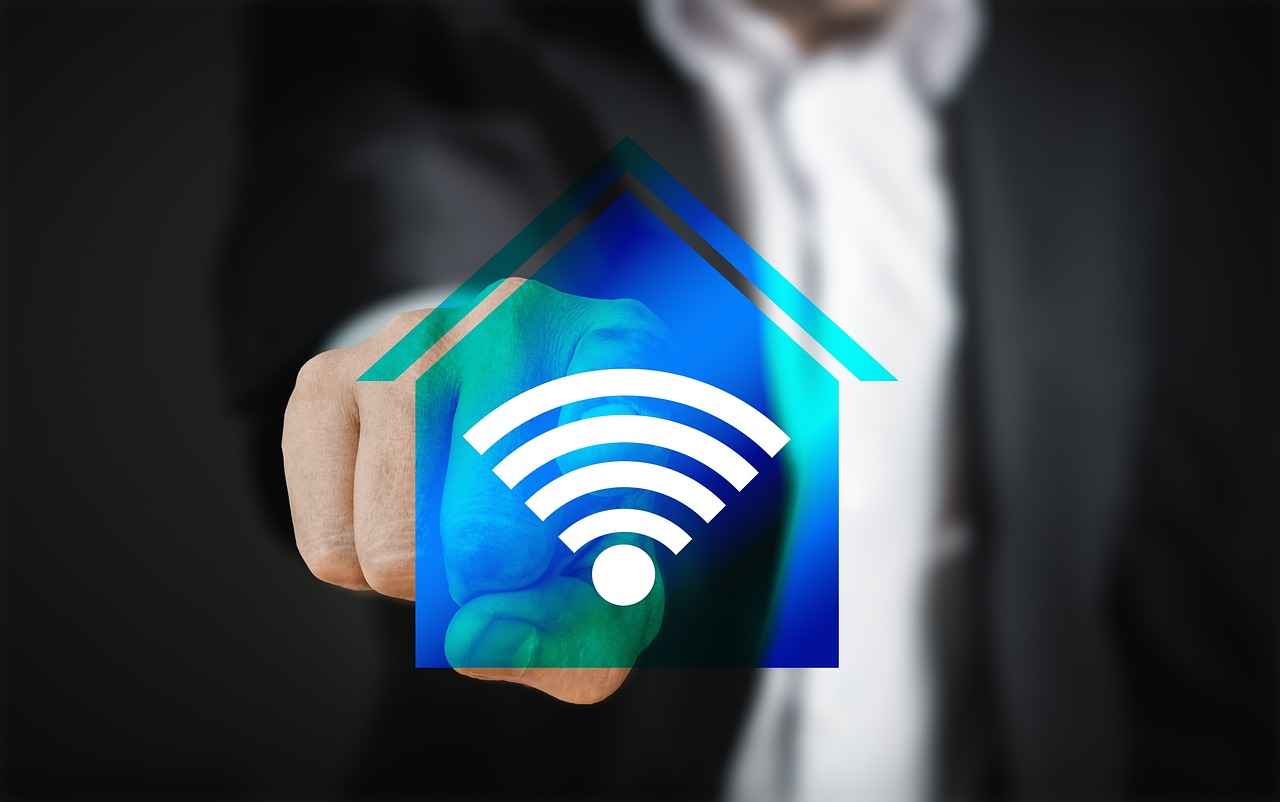In today’s fast-paced world, smart home devices are revolutionizing our daily routines. They provide not only convenience but also enhanced security and improved energy efficiency. This article delves into the various essential devices that can transform any living space into a smart home, making life easier and more enjoyable.
What is a Smart Home?
A smart home is a residence that uses technology to automate and control various household functions. This integration of technology allows homeowners to manage everything from lighting and heating to security systems, all from a single device or app, significantly enhancing comfort and safety.
Benefits of Smart Home Devices
- Convenience: Control devices from anywhere.
- Energy Savings: Optimize energy consumption.
- Improved Security: Monitor your home remotely.
- Enhanced Home Management: Streamline daily tasks.
Smart Speakers: Your Voice-Activated Assistant
Smart speakers like the Amazon Echo and Google Nest serve as central hubs for your smart home. They respond to voice commands, play music, and provide information. These devices can control other smart devices seamlessly.
Popular Smart Speaker Options
- Amazon Echo
- Google Nest
- Apple HomePod
Smart Thermostats: Energy Efficiency at Its Best
Smart thermostats, such as those from Nest and Ecobee, allow homeowners to control heating and cooling remotely, learning preferences over time to optimize energy use and reduce bills.
Smart Security Cameras: Keeping Your Home Safe
Smart security cameras enhance home security by providing real-time monitoring and alerts. Brands like Ring and Arlo offer features such as night vision and motion detection.
Smart Lighting: Control at Your Fingertips
Smart lighting solutions from brands like Philips Hue allow users to control their lights remotely, set schedules, and customize colors, improving both ambiance and energy efficiency.
Smart Plugs: Simple Automation Solutions
Smart plugs are an easy way to automate everyday appliances. They connect to Wi-Fi and can be controlled via smartphone apps, allowing users to schedule devices to turn on or off.
Conclusion: Embracing the Smart Home Revolution
Integrating smart home devices into your living space can significantly enhance your lifestyle. With the continuous advancement of technology, creating a connected and efficient home has never been easier or more accessible.

What is a Smart Home?
A smart home refers to a residence that utilizes advanced technology to automate various tasks, thereby enhancing the overall efficiency and convenience of daily living. By integrating a network of devices that communicate with each other, homeowners can control aspects of their home remotely, often through a smartphone or voice-activated assistant.
One of the primary features of a smart home is its ability to automate everyday tasks. For instance, homeowners can schedule their lights to turn on or off at specific times, adjust the thermostat from anywhere, or even monitor security cameras in real-time through their mobile devices. This level of control not only enhances comfort but also significantly improves security and energy efficiency.
Moreover, smart homes are designed to learn from user behavior. Smart devices, such as thermostats and lighting systems, can adapt to the preferences of the occupants over time. For example, a smart thermostat can learn when the house is typically occupied and adjust heating and cooling accordingly, leading to substantial energy savings.
The integration of smart technology also enhances the safety of a home. Smart security systems can send alerts to homeowners if they detect unusual activity, while smart locks allow for keyless entry, providing an additional layer of protection.
In conclusion, a smart home is not merely a trend; it represents a significant shift towards more efficient living. With the ability to automate tasks, enhance security, and save energy, smart homes are becoming increasingly popular among homeowners looking to improve their quality of life.

Benefits of Smart Home Devices
In today’s fast-paced world, smart home devices have emerged as a revolutionary solution, providing a multitude of advantages that cater to the needs of modern homeowners. From enhancing convenience to improving energy efficiency, these devices are becoming increasingly popular. Below, we explore the key benefits that make smart home technology a worthwhile investment.
- Convenience: Smart home devices streamline daily tasks, allowing homeowners to control various systems from their smartphones or through voice commands. Imagine adjusting your thermostat or turning off lights without having to get up. This level of control not only saves time but also enhances your overall living experience.
- Energy Savings: One of the most significant advantages of smart home devices is their ability to optimize energy consumption. Smart thermostats, for example, learn your habits and adjust temperatures accordingly, leading to reduced energy bills. Additionally, smart plugs can schedule appliances to turn off when not in use, further contributing to energy efficiency.
- Improved Security: Smart home devices enhance security by providing real-time monitoring and alerts. Smart cameras and doorbell systems allow homeowners to keep an eye on their property from anywhere, while smart locks offer keyless entry and remote access. This level of security not only protects your home but also provides peace of mind.
- Enhanced Home Management: With smart home devices, managing your household becomes easier than ever. You can monitor energy usage, set schedules for appliances, and receive notifications about important events, such as package deliveries. This capability allows for better organization and efficiency in your daily life.
In summary, the integration of smart home devices into your living space offers numerous benefits that enhance convenience, security, and energy efficiency. As technology continues to evolve, these devices will likely become an essential part of modern living, making homes smarter and more efficient.

Smart Speakers: Your Voice-Activated Assistant
In today’s fast-paced world, smart speakers have emerged as essential devices that enhance our daily lives by acting as central hubs for controlling various smart home devices. These innovative gadgets respond to voice commands, allowing users to play music, obtain information, and manage home automation systems effortlessly.
One of the most remarkable features of smart speakers is their ability to integrate with a wide range of smart home systems. This means that with a simple voice command, you can adjust your thermostat, turn on lights, or even lock your doors. This level of control not only adds convenience but also enhances your home security and energy efficiency.
Smart speakers are equipped with advanced voice recognition technology, enabling them to understand and execute commands accurately. For instance, you can ask your speaker to play your favorite playlist, check the weather, or set reminders, making it a versatile tool that caters to your daily needs.
Moreover, popular brands like Amazon Echo, Google Nest, and Apple HomePod offer various models with unique features, ensuring there is a smart speaker suitable for every user preference. Each of these devices comes with its own set of functionalities, from high-quality audio playback to seamless integration with other smart devices.
Setting up a smart speaker is typically straightforward. Users only need to connect the device to their Wi-Fi network and download the corresponding app. Following the manufacturer’s instructions ensures a smooth integration process, allowing you to start enjoying the benefits of your new voice-activated assistant in no time.
In conclusion, smart speakers significantly enhance the convenience of managing your home. By embracing this technology, you can enjoy a more connected and efficient lifestyle, making everyday tasks easier and more enjoyable.
Popular Smart Speaker Options
In the ever-evolving landscape of smart home technology, smart speakers have emerged as essential devices that serve as the backbone of a connected home. Leading brands have developed innovative products that cater to varying user preferences, ensuring that there is a smart speaker for everyone.
| Brand | Key Features | Compatibility |
|---|---|---|
| Amazon Echo | Alexa voice assistant, multi-room audio, smart home control | Compatible with thousands of smart devices |
| Google Nest | Google Assistant, voice recognition, streaming services | Works seamlessly with Google Home ecosystem |
| Apple HomePod | Siri integration, high-fidelity audio, smart home hub | Compatible with Apple HomeKit devices |
The Amazon Echo stands out for its versatility and extensive compatibility with a wide range of smart devices. With its built-in Alexa voice assistant, users can control their smart home, play music, and even order products online with simple voice commands.
On the other hand, the Google Nest offers seamless integration with Google services, making it an excellent choice for users who are deeply embedded in the Google ecosystem. Its voice recognition capabilities allow for personalized responses, enhancing user interaction.
For Apple enthusiasts, the Apple HomePod delivers exceptional sound quality and integrates effortlessly with the Apple ecosystem. With Siri at its core, users can manage their smart home while enjoying high-fidelity music playback.
In conclusion, the diversity of features and compatibility options offered by these leading smart speakers ensures that users can find a device that fits their specific needs and preferences. As smart home technology continues to advance, these speakers will play an increasingly vital role in creating a connected and convenient living environment.
How to Set Up a Smart Speaker
Setting up a smart speaker is a straightforward process that can greatly enhance your smart home experience. These devices not only allow you to control your smart home ecosystem with your voice but also serve as a source of entertainment and information. Here’s a detailed guide on how to successfully set up your smart speaker.
- Step 1: Unbox and Position Your Smart Speaker
Begin by carefully unboxing your smart speaker. Choose a central location in your home where it can easily pick up your voice commands. Ensure it’s near a power outlet for easy access.
- Step 2: Power On the Device
Connect the smart speaker to the power outlet and turn it on. Wait for the device to boot up, which is usually indicated by an LED light.
- Step 3: Download the Companion App
To manage your smart speaker, download the corresponding app from your device’s app store. Popular options include the Amazon Alexa app or the Google Home app, depending on your smart speaker’s brand.
- Step 4: Connect to Wi-Fi
Open the app and follow the prompts to connect your smart speaker to your Wi-Fi network. You will need your Wi-Fi password for this step.
- Step 5: Customize Your Settings
After connecting to Wi-Fi, you can customize settings such as voice recognition, linked services, and preferences for music or news sources.
- Step 6: Integrate with Other Smart Devices
For a seamless smart home experience, integrate your smart speaker with other compatible devices. This may involve linking accounts or enabling certain skills within the app.
By following these steps, you will have your smart speaker up and running in no time. Enjoy the convenience of voice-activated control and explore the myriad of features your new device offers!

Smart Thermostats: Energy Efficiency at Its Best
In the era of smart technology, smart thermostats have emerged as essential devices for homeowners seeking to enhance their energy efficiency and comfort. These innovative gadgets provide the ability to control heating and cooling systems remotely, allowing users to optimize energy usage effectively.
One of the standout features of smart thermostats is their ability to learn user preferences. Over time, they analyze your daily routines and adjust settings automatically, ensuring that your home is always at the ideal temperature when you need it. This functionality not only enhances comfort but also leads to significant energy savings, as systems are not running unnecessarily when the house is empty.
How Smart Thermostats Work
- Remote Control: With a smartphone or tablet, homeowners can adjust their thermostat settings from anywhere, ensuring optimal energy management.
- Learning Algorithms: Smart thermostats utilize advanced algorithms to learn your habits and preferences, adjusting the temperature accordingly.
- Energy Reports: Many models provide detailed energy usage reports, helping homeowners understand their consumption patterns.
Top Smart Thermostat Brands
| Brand | Key Features |
|---|---|
| Nest | Geofencing, energy history, and easy integration with Google Home. |
| Ecobee | Room sensors, voice control, and energy-saving reports. |
| Honeywell | Flexible scheduling, smart alerts, and compatibility with various HVAC systems. |
Installing a Smart Thermostat
Installation of a smart thermostat is typically straightforward. Most models come with user-friendly guides that walk you through the process of replacing your existing thermostat and connecting it to your Wi-Fi network. This ease of installation makes it accessible for many homeowners looking to upgrade their home’s efficiency.
In conclusion, investing in a smart thermostat is a practical step towards a more energy-efficient and comfortable home. With their ability to learn and adapt to your lifestyle, these devices not only enhance convenience but also contribute to significant energy savings, making them a worthwhile addition to any smart home.
Top Smart Thermostat Brands
In the realm of smart home technology, smart thermostats have emerged as essential devices for homeowners seeking to enhance energy efficiency and comfort. With the ability to control heating and cooling remotely, these devices not only optimize energy usage but also provide valuable insights into energy consumption patterns.
Among the leading brands in this space, Nest, Ecobee, and Honeywell stand out due to their innovative features and user-friendly interfaces. Let’s explore what makes these brands popular choices for energy-conscious homeowners:
- Nest: Known for its sleek design and intuitive learning capabilities, Nest thermostats adapt to your schedule and preferences over time. The geofencing feature allows the thermostat to detect when you are home or away, adjusting the temperature accordingly to save energy.
- Ecobee: This brand takes energy efficiency a step further with its room sensors, which monitor occupancy and adjust heating or cooling based on where people are in the home. Ecobee also provides detailed energy reports, helping users understand their consumption and make informed decisions.
- Honeywell: Offering a range of smart thermostats, Honeywell combines advanced technology with reliability. Their models often include features like scheduling, remote access via smartphone apps, and energy-saving tips, making them a practical choice for homeowners.
Each of these brands offers unique features tailored to different user needs, ensuring that homeowners can find a smart thermostat that fits their lifestyle. Whether you’re looking for advanced learning capabilities, room-specific adjustments, or comprehensive energy reports, these brands have you covered.
In conclusion, investing in a smart thermostat from reputable brands like Nest, Ecobee, or Honeywell is a wise decision for those looking to enhance their home’s energy efficiency while enjoying the convenience of smart technology.
Installing a Smart Thermostat
Upgrading to a smart thermostat can significantly enhance your home’s energy efficiency and comfort. The installation process is generally straightforward, making it accessible for most homeowners. Here’s a detailed guide to help you navigate the installation of your new smart thermostat.
- Gather Your Tools: Before you start, ensure you have the necessary tools, including a screwdriver, a drill (if needed), and possibly a level to ensure your thermostat is mounted correctly.
- Turn Off Power: Safety first! Always turn off the power to your heating and cooling system at the circuit breaker to avoid any electrical hazards.
- Remove the Old Thermostat: Carefully detach your existing thermostat from the wall. Take a picture of the wiring for reference, as this will help you connect the new thermostat correctly.
- Connect the Wires: Using the photo as a guide, connect the wires from your wall to the corresponding terminals on your new smart thermostat. Most models are color-coded and come with clear instructions.
- Attach the Thermostat: Once the wires are securely connected, mount the thermostat onto the wall. Ensure it is level and properly fitted.
- Power On and Configure: Turn the power back on at the circuit breaker. Follow the manufacturer’s instructions to connect your thermostat to your Wi-Fi network and download the corresponding app for your smartphone.
- Customize Settings: After installation, take some time to customize the settings according to your preferences. Many smart thermostats can learn your schedule and adjust temperatures automatically.
Many modern smart thermostats come with user-friendly guides and apps that simplify the installation process. If you encounter any difficulties, don’t hesitate to consult online resources or contact customer support for assistance. Enjoy the benefits of a more energy-efficient home!

Smart Security Cameras: Keeping Your Home Safe
Smart Security Cameras have revolutionized the way homeowners approach safety and surveillance. These devices not only provide peace of mind but also enhance the overall security of your property. With the ability to monitor your home remotely, smart security cameras are essential for anyone looking to protect their living space effectively.
One of the standout features of smart security cameras is their motion detection capability. This technology allows the camera to detect movement within its field of view and send real-time alerts to your smartphone. This is particularly useful for identifying potential intruders or monitoring activity around your home.
Another vital feature is night vision. Smart security cameras equipped with infrared technology can capture clear images in low-light conditions, ensuring that your property is monitored around the clock. This means you can rest easy knowing that your home is being watched even when the sun goes down.
Additionally, many smart security cameras offer cloud storage options for recorded footage. This means that even if the camera is tampered with or stolen, you will still have access to the recorded videos. Cloud storage can also allow you to review past footage at any time, which can be invaluable in the event of an incident.
- Choosing the Right Security Camera: When selecting a security camera, consider resolution, field of view, and whether it requires a subscription for cloud storage.
- Integrating Cameras with Other Smart Devices: Linking your camera with smart locks and alarms can create a comprehensive security system.
In conclusion, investing in smart security cameras is a proactive step towards safeguarding your home. With features like motion detection, night vision, and cloud storage, these devices provide an unparalleled level of security and convenience. As technology continues to evolve, integrating smart security solutions into your home will only become more essential.
Choosing the Right Security Camera
is a crucial decision for homeowners looking to enhance their property’s safety. With a myriad of options available, it’s essential to understand the key features that can significantly impact your monitoring experience.
When selecting a security camera, consider the following factors:
- Resolution: Higher resolution cameras provide clearer images. Look for cameras that offer at least 1080p HD quality to ensure you capture important details.
- Field of View: A wider field of view allows a single camera to cover more area, reducing the number of cameras needed. Look for cameras with at least a 130-degree field of view.
- Night Vision: Ensure the camera has infrared capabilities for clear video in low-light conditions. This feature is vital for nighttime monitoring.
- Motion Detection: Cameras with advanced motion detection can send alerts to your phone, allowing you to respond quickly to any suspicious activity.
- Cloud Storage Options: Some cameras require a subscription for cloud storage. Evaluate the costs and benefits of these services, as they can vary significantly among brands.
- Integration with Smart Home Systems: Choose cameras that can easily integrate with your existing smart home devices, allowing for seamless control and monitoring.
Popular options in the market include:
- Ring: Known for its video doorbells and security cameras, Ring offers robust features and easy integration with smart home systems.
- Arlo: Arlo cameras are praised for their high resolution and flexible storage options, making them a favorite among tech-savvy users.
- Nest: Nest cameras are designed for easy setup and integration with Google Home, providing a user-friendly experience.
In conclusion, selecting the right security camera involves careful consideration of your specific needs and preferences. By focusing on key features and popular brands, you can enhance your home’s security effectively.
Integrating Cameras with Other Smart Devices
In today’s digital age, smart security cameras are not just standalone devices; they are integral components of a comprehensive home security system. By linking these cameras with other smart devices, such as smart locks and alarms, homeowners can create a seamless and efficient security network that enhances their peace of mind.
One of the primary advantages of integrating smart cameras with other security devices is the ability to monitor your home from a single app. This centralization allows users to receive real-time alerts and notifications, ensuring they are always informed about any suspicious activity. For instance, if a motion is detected by the camera, users can receive an immediate alert on their smartphones, prompting them to check the live feed or take necessary action.
Moreover, when smart cameras are connected to smart locks, homeowners can enhance their security measures significantly. Imagine arriving home and having your smart lock automatically unlock as you approach, all while the camera records your arrival. This integration not only provides convenience but also adds an extra layer of security by documenting who enters and exits your home.
Additionally, linking smart cameras with alarms can create a robust response system. If a camera detects unusual movement, it can trigger the alarm system, alerting the homeowner and deterring potential intruders. This interconnectedness ensures that every device works in harmony, providing a comprehensive security solution.
In conclusion, the integration of smart cameras with other smart devices is essential for creating a holistic security system. By utilizing a single app to monitor and control these devices, homeowners can significantly enhance their safety and convenience. As technology continues to evolve, the possibilities for smart home integration are limitless, paving the way for a more secure and connected living environment.

Smart Lighting: Control at Your Fingertips
In today’s fast-paced world, smart lighting systems have emerged as a pivotal element in the realm of home automation. These innovative solutions not only provide convenience but also significantly enhance the ambiance and energy efficiency of your home.
With smart lighting, homeowners can easily control their lights remotely using a smartphone app or voice commands. This feature is particularly useful for those who want to ensure their home is well-lit when they arrive or to deter potential intruders by simulating occupancy.
Another key advantage of smart lighting systems is the ability to set schedules. This functionality allows users to program their lights to turn on or off at specific times, which can lead to substantial energy savings. For example, you can set your outdoor lights to illuminate at sunset and turn off at sunrise, ensuring that they are only in use when needed.
Moreover, smart lighting systems offer a range of customizable colors and brightness levels, enabling homeowners to create the perfect ambiance for any occasion. Whether you’re hosting a dinner party, watching a movie, or enjoying a quiet evening, you can easily adjust the lighting to match your mood.
| Feature | Benefits |
|---|---|
| Remote Control | Convenience and security |
| Scheduling | Energy efficiency |
| Customizable Colors | Enhanced ambiance |
Brands like Philips Hue, LIFX, and Wyze offer a variety of smart lighting options that seamlessly integrate with major smart home platforms. Setting up these systems typically involves replacing standard bulbs with smart ones and connecting them to a hub or mobile app. Once set up, users can enjoy effortless control over their lighting.
In conclusion, embracing smart lighting technology can greatly enhance your home’s convenience, ambiance, and energy efficiency. By investing in smart lighting systems, you are not only upgrading your living space but also contributing to a more energy-conscious lifestyle.
Popular Smart Lighting Solutions
In today’s fast-paced world, smart lighting solutions have become an essential component of modern homes. Brands like Philips Hue, LIFX, and Wyze are leading the charge, offering innovative products that seamlessly integrate with major smart home platforms. This allows users to control their lighting with ease, enhancing both convenience and ambiance.
- Philips Hue: Known for its extensive range of smart bulbs, Philips Hue offers products that can change color, dim, and be controlled via voice commands or mobile apps. The system is compatible with popular platforms like Amazon Alexa and Google Assistant, making it a versatile choice for any smart home setup.
- LIFX: LIFX bulbs are notable for their vibrant colors and high brightness levels. They connect directly to Wi-Fi, eliminating the need for a hub, and are compatible with various smart home ecosystems. Users can create schedules, set scenes, and even sync lights with music for an immersive experience.
- Wyze: Offering budget-friendly options, Wyze smart bulbs provide essential features without breaking the bank. They can be controlled via the Wyze app and integrate with other Wyze devices, making them a great entry point for those new to smart lighting.
Setting up these smart lighting systems is generally straightforward. Users typically need to replace existing bulbs with smart versions and connect them to a hub or app. Once set up, controlling the lights can be done through voice commands or mobile devices, allowing for a customizable lighting experience.
In conclusion, investing in smart lighting solutions not only adds convenience but also enhances the overall atmosphere of your home. With options from reputable brands, homeowners can easily create a smart lighting system that fits their lifestyle and preferences.
Setting Up Smart Lighting
is an essential step in modernizing your home and enhancing your living experience. Smart lighting systems not only offer convenience but also contribute to energy efficiency and security. This guide will provide a comprehensive overview of how to effectively set up smart lighting in your home.
To begin with, selecting the right smart bulbs is crucial. Popular brands such as Philips Hue, LIFX, and Wyze offer a variety of smart bulbs that can fit different fixtures and preferences. These bulbs can be controlled remotely, allowing you to adjust brightness, color, and even set schedules from your smartphone or through voice commands.
Once you have chosen your smart bulbs, the next step is installation. This typically involves:
- Removing your existing light bulbs.
- Inserting the smart bulbs into the desired fixtures.
- Connecting the bulbs to your home Wi-Fi network through the manufacturer’s app.
After installation, you can create a smart lighting ecosystem by connecting your bulbs to a central hub or smart home assistant, like Amazon Alexa or Google Assistant. This integration allows for seamless control of your lighting through voice commands or mobile devices, offering a truly hands-free experience.
Furthermore, users can take advantage of advanced features such as:
- Scheduling: Set your lights to turn on or off at specific times.
- Scenes: Create customized lighting settings for different activities, such as reading or entertaining.
- Automation: Sync your lights with other smart devices, such as motion sensors or smart locks, for enhanced security.
In conclusion, setting up smart lighting is a straightforward process that significantly enhances the functionality and ambiance of your home. By investing in quality smart bulbs and integrating them with your home automation system, you can enjoy the benefits of modern technology while improving energy efficiency and convenience in your daily life.

Smart Plugs: Simple Automation Solutions
In the age of technology, smart plugs have emerged as a popular solution for automating everyday devices, providing users with greater control and convenience. These compact devices allow you to transform any ordinary appliance into a smart one, enabling remote management through your smartphone or voice commands.
Smart plugs connect directly to your home Wi-Fi network, allowing users to monitor and control devices from anywhere. By simply plugging an appliance into a smart plug, you can turn it on or off remotely, set schedules, and even track energy usage. This functionality not only enhances convenience but also promotes energy efficiency by allowing users to ensure devices are not left on unnecessarily.
How Do Smart Plugs Work?
- Smart plugs typically connect to your Wi-Fi network.
- Users can control them via a dedicated mobile app or through voice assistants like Amazon Alexa or Google Assistant.
- Many smart plugs also offer features such as timers and energy monitoring, allowing users to optimize their energy consumption.
Best Smart Plug Options
| Smart Plug Model | Key Features | Compatibility |
|---|---|---|
| TP-Link Kasa Smart Plug | Energy monitoring, scheduling | Amazon Alexa, Google Assistant |
| Wemo Mini Smart Plug | Compact design, no hub required | Apple HomeKit, Google Assistant |
| Amazon Smart Plug | Easy setup, voice control | Amazon Alexa |
In conclusion, smart plugs are an excellent entry point for anyone looking to dip their toes into the world of home automation. They are not only affordable but also versatile, making them suitable for a wide range of devices, from lamps to coffee makers. By integrating smart plugs into your daily routine, you can enjoy enhanced convenience and improved energy efficiency, paving the way for a smarter home.
How Smart Plugs Work
Smart plugs are innovative devices that significantly enhance the functionality of everyday appliances. By connecting to your home Wi-Fi network, these plugs allow you to control any device plugged into them remotely. This means that whether you’re at home or away, you can manage your devices with ease.
Using a smartphone app or a voice assistant, you can turn devices on or off, monitor their energy consumption, and even set schedules. For instance, you can program your coffee maker to start brewing at a specific time every morning, ensuring you wake up to the aroma of fresh coffee. This level of control not only adds convenience but also helps in reducing energy consumption.
| Feature | Description |
|---|---|
| Remote Control | Control connected devices from anywhere using a smartphone app. |
| Scheduling | Set specific times for devices to turn on or off automatically. |
| Energy Monitoring | Track energy usage to identify opportunities for savings. |
Smart plugs are an excellent choice for those looking to dip their toes into the world of smart home technology without making a significant investment. They can transform any standard appliance into a smart device, allowing for greater efficiency and convenience.
When selecting a smart plug, consider features such as energy monitoring, compatibility with your existing smart home ecosystem, and ease of use. Some of the top-rated options include:
- TP-Link Kasa Smart Plug: Known for its reliability and user-friendly app.
- Wemo Mini Smart Plug: Compact design and easy integration with voice assistants.
- Amazon Smart Plug: Seamlessly works with Alexa for voice control.
In summary, smart plugs are a simple yet effective way to enhance your home automation experience. By offering remote control and scheduling capabilities, they help streamline daily routines while promoting energy efficiency.
Best Smart Plug Options
Smart plugs are an essential component of any modern smart home, providing a simple way to automate everyday devices and enhance energy efficiency. Below, we explore some of the top smart plug options available on the market, highlighting their unique features and benefits.
| Smart Plug | Key Features | Compatibility |
|---|---|---|
| TP-Link Kasa Smart Plug |
|
Alexa, Google Assistant, SmartThings |
| Wemo Mini Smart Plug |
|
Alexa, Google Assistant, Apple HomeKit |
| Amazon Smart Plug |
|
Alexa |
Each of these smart plugs offers distinct advantages, making them suitable for different user needs. The TP-Link Kasa Smart Plug stands out for its energy monitoring capabilities, allowing users to track their energy consumption and make informed decisions. The Wemo Mini Smart Plug is ideal for those seeking a compact solution without sacrificing functionality, while the Amazon Smart Plug is perfect for users heavily invested in the Alexa ecosystem.
In conclusion, choosing the right smart plug depends on your specific requirements and existing smart home setup. By integrating these devices, you can enjoy greater convenience and energy savings in your daily life.

Conclusion: Embracing the Smart Home Revolution
Integrating smart home devices into your living space can significantly enhance your lifestyle. With advancements in technology, creating a connected and efficient home has never been easier. These devices not only offer convenience but also improve energy management and security, making them essential for modern living.
The evolution of smart home technology has paved the way for a more automated lifestyle. By utilizing devices such as smart speakers, homeowners can control various systems with simple voice commands, streamlining daily routines. Furthermore, smart thermostats optimize energy consumption by learning user preferences, which can lead to substantial savings on utility bills.
Security is another critical aspect where smart devices excel. Installing smart security cameras provides peace of mind, allowing homeowners to monitor their property remotely. These cameras often come equipped with advanced features like motion detection and night vision, ensuring comprehensive surveillance.
Moreover, smart lighting systems enhance ambiance and energy efficiency, enabling users to control lighting from their smartphones or through voice activation. This level of control not only adds convenience but also promotes a more sustainable lifestyle through energy savings.
Lastly, smart plugs offer a simple yet effective way to automate everyday appliances, giving users the ability to manage energy consumption easily. By integrating these devices into your home, you can create a cohesive ecosystem that enhances your living experience.
In conclusion, embracing the smart home revolution is not just about convenience; it’s about creating a more efficient, secure, and enjoyable living environment. As technology continues to advance, the possibilities for smart home integration will only expand, making it an exciting time to invest in these innovations.
Frequently Asked Questions
- What is a smart home?
A smart home is a living space that uses technology to automate tasks and enhance efficiency. It allows homeowners to control devices remotely, providing increased comfort, security, and energy savings.
- How do smart speakers work?
Smart speakers act as central hubs for your smart home. They respond to voice commands, allowing you to control other devices, play music, and access information seamlessly.
- Can smart thermostats really save energy?
Absolutely! Smart thermostats learn your preferences and adjust heating and cooling accordingly, leading to significant energy savings and optimized comfort in your home.
- Are smart security cameras worth it?
Yes! Smart security cameras provide peace of mind by allowing you to monitor your home remotely. Features like motion detection and night vision enhance security, making them a valuable investment.
- How easy is it to set up smart lighting?
Setting up smart lighting is typically straightforward. Just replace your existing bulbs with smart ones, connect them to a hub or app, and you’re ready to control your lighting from anywhere!
- What are smart plugs used for?
Smart plugs let you control any device plugged into them remotely. They are a simple and cost-effective way to add automation to everyday appliances, improving convenience and energy efficiency.














